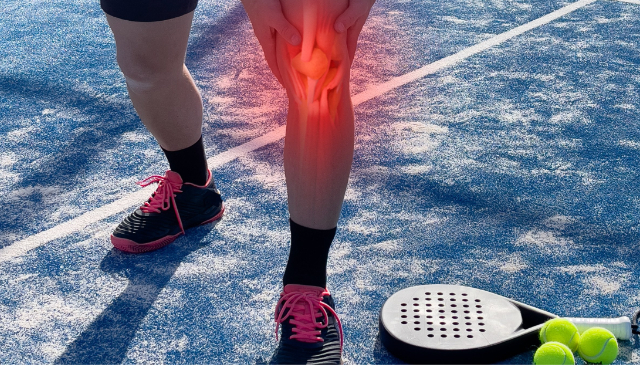News
Why Pain Doesn’t Always Mean Injury – And What You Can Do About It

As a physical therapist, I see it all the time–an athlete comes in worried because they're feeling pain, but after an evaluation, we find there's no real tissue damage. Pain doesn't always mean injury, and understanding this can help you train smarter and recover better.
Pain vs. Injury – What's the Difference?
It's natural to think that if something hurts, you must have injured it. But pain is actually a complex experience influenced by more than just physical damage.
An injury happens when there is actual damage to muscles, ligaments, or bones–like a sprained ankle or a torn muscle. Pain, on the other hand, is your body's warning system, letting you know something might be wrong. But here's the key: sometimes that alarm goes off even when there's no real damage.
Why You Might Feel Pain Without an Injury
If pain doesn't always mean injury, what's causing it? There are a few possible reasons:
Your body is adapting
When you push your limits in training, your body can respond with pain, even if nothing is injured. Think of muscle soreness after a tough workout.
Your nervous system is on high alert
Stress, poor sleep, and past injuries can make your body more sensitive to pain, even if your tissues are fine.
Your training load is off
Doing too much too soon, or not giving yourself enough time to recover, can lead to lingering pain signals.
Fear of injury
If you've been injured before, your brain might remember the pain and send warning signals even when there's no real damage.
Should You Stop Playing If You Have Pain?
Not necessarily. Pain doesn't always mean you need to stop, but it also shouldn't be ignored. The key is figuring out whether your pain is something to push through or something that needs a different approach.
Pain that comes and goes, improves with movement, or is linked to training load can often be managed with adjustments. But pain that gets worse over time, limits your ability to move, or feels sharp and sudden should be checked out.
What You Can Do About It
If you're dealing with pain and you're not sure what's causing it, here's what I recommend:
Talk to a Physical Therapist
A PT can help you figure out what's really going on–whether it's an actual injury, an imbalance, or just your body adapting. Instead of guessing, you'll get a plan based on your specific needs.
Adjust Your Training
If your pain is due to overuse or improper recovery, small changes in your training can make a big difference. A PT can help you modify your workouts without losing progress.
Improve Recovery
Sleep, nutrition, and stress management all play a role in how your body responds to pain. Making sure you're recovering properly can help reduce unnecessary pain signals.
Keep Moving (The Right Way)
Completely stopping activity isn't always the best option. Movement can actually help reduce pain if done correctly. A PT can guide you on safe ways to stay active while letting your body recover.
The Bottom Line
Pain doesn't always mean you're injured, but it also shouldn't be ignored. If you're feeling pain, and you're not sure what to do, talk with a physical therapist. They can help you understand what's happening and give you the best strategy to keep you performing at your best–without unnecessary setbacks.
Reference
For more details, check out the original study: Not All Pain Is Caused by Tissue Damage in Sports – Should Management Change?
Disclaimer:
The information in the articles, posts, and newsfeed is intended for informational and educational purposes only and in no way should be taken to be the provision or practice of physical therapy, medical, or professional healthcare advice or services. The information should not be considered complete or exhaustive and should not be used for diagnostic or treatment purposes without first consulting with your physical therapist, occupational therapist, physician or other healthcare provider. The owners of this website accept no responsibility for the misuse of information contained within this website.
